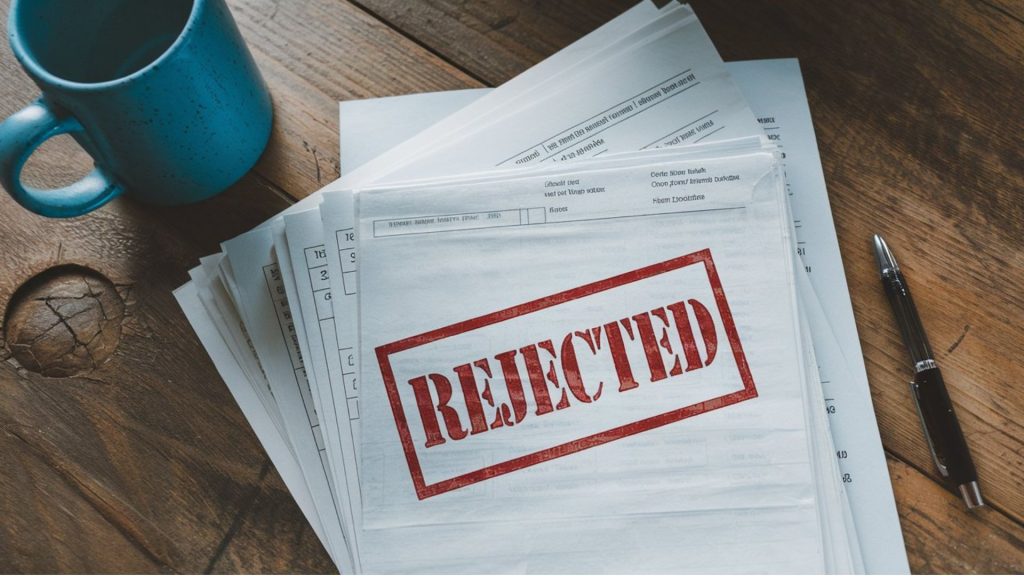I recently learned that thousands of property buyers overpay stamp duty without realizing it. Many think this money is lost forever.
But here’s something most people don’t know – you can actually get that money back from HMRC if you’ve paid too much. The government processes thousands of refund claims every year.
Getting a stamp duty refund isn’t as complicated as it sounds. I’ve seen people recover thousands of pounds they thought were gone forever. The process involves specific steps, proper documentation, and knowing exactly when you qualify for a refund.
This blog will show you everything you need to know about claiming your stamp duty refund. From checking eligibility to receiving your refund, I’ll guide you through each step of the process.
What Is Stamp Duty Land Tax?
Stamp Duty Land Tax is a government tax you pay when buying property or land in England and Northern Ireland. The tax applies to both residential and commercial properties above certain price thresholds.
The amount you pay depends on your property’s purchase price and your circumstances. First-time buyers get reduced rates, while additional property purchases face higher charges.
You must pay SDLT within 14 days of completing the purchase of your property. SDLT rates change regularly based on government policy, which often leads to confusion and overpayments by property buyers.
Key points:
- Applies to England and Northern Ireland only
- Payment is due within 14 days of completion
- Different rates for first-time buyers and additional properties
- Uses tiered tax bands based on property value
- Usually handled by solicitors or conveyancers
- Rates change frequently due to government policy
Common Scenarios for SDLT Refund

Several situations can lead to SDLT overpayments that qualify for refunds. Understanding these scenarios helps you identify if you’re owed money back from your property purchase.
1. Property Chain Breakdown
When your property purchase falls through after you have paid SDLT, you can claim a full refund. This occurs when contracts are cancelled or transactions fail to complete for various reasons.
2. Calculation Errors
HMRC sometimes makes mistakes when calculating your SDLT bill. If you paid more than required due to incorrect rate applications or threshold miscalculations, you’re entitled to a refund.
3. Relief Claims
You might qualify for reliefs you didn’t claim initially. Multiple dwellings relief, charity relief, or first-time buyer relief can reduce your SDLT liability significantly after purchase.
4. Property Value Disputes
If your property’s actual value differs from the purchase price due to defects or misrepresentation, you can claim refunds. This applies when the true market value is lower than what you paid.
5. Overpayment on Additional Properties
Sometimes buyers pay additional property taxes incorrectly. If you sold your main residence within three years, you can reclaim the 3% surcharge you initially paid.
Eligibility Criteria for SDLT Refund

Meeting specific requirements is essential for a successful stamp duty refund claim. HMRC has clear criteria that determine whether your overpayment qualifies for reimbursement.
Time Limit Requirements: You must submit your refund claim within four years of the original transaction date. HMRC strictly enforces this deadline and won’t process late applications.
Proof of Overpayment: You need clear evidence that you paid more SDLT than legally required. This could be calculation errors, incorrect rate applications, or missed relief entitlements.
Transaction Legitimacy: Your original property purchase must be genuine and properly documented. HMRC verifies all transaction details before approving any refund requests.
No Fraudulent Activity: Your application must be honest and accurate. Any false information or fraudulent claims will result in penalties and may lead to potential legal action.
Outstanding Tax Compliance: All your other tax affairs must be current. HMRC may offset refunds against other unpaid taxes or outstanding debts you owe.
Required Documentation You Need for Your Application

Gathering the right documents before starting your refund claim saves time and prevents delays. HMRC requires specific paperwork to verify your overpayment and process your refund.
| Document Type | Description | Purpose |
|---|---|---|
| SDLT1 Form | Original stamp duty return submitted | Shows initial payment calculation |
| Purchase Contract | Signed property purchase agreement | Confirms agreed purchase price |
| Completion Statement | Final transaction breakdown | Shows actual amounts paid |
| Bank Statements | Proof of SDLT payment | Verifies payment amount and date |
| Solicitor’s Letter | Legal confirmation of overpayment | Explains the reason for the refund claim |
| Property Valuation | Professional survey or valuation | Supports price reduction claims |
| Amendment Documents | Any contract variations or addendums | Shows changes affecting SDLT |
| First-Time Buyer Evidence | Declarations or certificates | Proves eligibility for relief |
| Previous Property Sales | Completion statements for sold properties | Supports additional property surcharge refunds |
Keep copies of all documents for your records. HMRC may request additional information during their review process.
Step-By-Step Process for Claiming a Refund
Following these six steps will help you claim your SDLT refund efficiently and avoid common mistakes that delay applications.
Step 1: Check Eligibility
Review your SDLT calculations and property details carefully. Compare what you paid against current rates and reliefs. Check if you qualify for any missed reliefs or if errors occurred during your original transaction.
Look at your completion statement and SDLT1 form side by side. Calculate what you should have paid based on current thresholds and your specific circumstances.
Step 2: Gather Documents
Collect all necessary paperwork, including SDLT1 forms, purchase contracts, and payment receipts. Organize everything chronologically to make your application stronger and clearer for HMRC review.
Make copies of bank statements showing your payments. Include any correspondence with your solicitor about the transaction or potential overpayments you discovered later.
Step 3: Prepare Refund Report
Draft a detailed explanation for the overpayment. Include specific reasons, calculations, and dates. Make your case clear and factual without unnecessary complexity that might confuse the reviewer.
Write a simple cover letter explaining why you believe you are overpaid. Reference specific sections of tax law or reliefs that apply to your situation.
Step 4: Submit to HMRC
Use the official online form or postal option to send your application. Include all supporting documents and keep copies of everything you submit for your records and future reference.
Double-check that you’ve signed all required forms. Missing signatures or incomplete sections will delay your application significantly and require resubmission.
Step 5: Wait for Review
HMRC will assess your claim and may request additional information. Response times vary, but most straightforward cases get processed within several weeks of submission to their review team.
Don’t contact HMRC immediately if you don’t hear back. They handle thousands of applications and need time to review each case thoroughly and accurately.
Step 6: Receive Refund
Approved refunds are typically paid directly to your bank account within 15–30 working days. HMRC sends confirmation letters explaining the refund amount and interest calculations for your records.
Keep all refund documentation for your tax records. You might need these papers for future property transactions or if HMRC has questions later.
What Happens If Your Claim Is Rejected?

HMRC rejects claims for various reasons, but rejection doesn’t always mean the end of your refund opportunity. Understanding why claims get refused helps you decide on the next steps.
- Insufficient Evidence – HMRC needs clear proof of overpayment to approve refunds. Missing documents, unclear calculations, or weak supporting evidence lead to rejections. You can resubmit with better documentation if this applies to your case.
- Time Limit Exceeded – Claims submitted more than four years after the SDLT payment date get automatically rejected. HMRC strictly enforces this deadline with very limited exceptions for exceptional circumstances.
- Incorrect Calculation – Sometimes, claimants miscalculate their overpayment amount or apply the wrong tax rates. HMRC reviews all calculations independently and rejects claims based on mathematical errors or a misunderstanding of tax rules.
- Ineligible Circumstances – Certain situations don’t qualify for refunds even if you paid more than expected. Standard rate changes or normal transaction costs don’t constitute valid reasons for overpayment.
- Appeal Process Available – You can appeal HMRC’s decision within 30 days of receiving the rejection letter. The appeal must include new evidence or demonstrate errors in HMRC’s assessment of your original claim.
Risks Involved in a Stamp Duty Refund
While claiming a stamp duty refund can help recover overpaid money, several risks are associated with the process. Understanding these potential downsides helps you make informed decisions about pursuing your claim.
1. Penalties for Incorrect Claims
HMRC may impose penalties if they discover you knowingly submitted false information or exaggerated your overpayment amount. Always ensure your claim is accurate and honest.
2. Additional Scrutiny of Your Tax Affairs
Filing a refund claim might trigger HMRC to review your other tax matters more closely. This could lead to investigations into your income tax, capital gains, or other financial dealings.
3. Professional Fees and Costs
Hiring solicitors or tax advisors to help with your claim costs money upfront. If your claim gets rejected, you won’t recover these professional fees from HMRC.
4. Time and Effort Investment
The refund process requires a significant amount of time, as it involves gathering documents, completing forms, and responding to HMRC queries. Complex cases can drag on for months without guaranteed success.
5. Interest Charges on Errors
If HMRC finds you actually underpaid rather than overpaid, they may charge interest and penalties on the shortfall. Double-check your calculations before claiming.
Conclusion
Getting your stamp duty refund doesn’t have to be overwhelming when you know the right steps to take. I’ve shown you how to check eligibility, gather the necessary documents, and submit your claim correctly.
Many property buyers leave money on the table simply because they don’t realize overpayments happen frequently. The key is to act within four years and have solid evidence to support your case.
Remember that HMRC processes thousands of these claims annually, so you’re not alone in this process. Most straightforward cases get resolved within weeks if you submit complete documentation.
Take time to review your property purchase details today. You may be surprised to discover that you’re owed money back from your stamp duty payment.














